 |
QELP Workshop
We'd like to thank all workshop participants for the enthusiasm
and energy you brought to the workshop. We hope you learned as
much as we did, and had as much fun too! Please stay in touch
and let us know of any new developments in your attempts to integrate
math and environmental science.
Below are just some of the references that were mentioned at
the workshop (more or less in chronological order).
Monday
- Greg and Joe
Our course website: 6
Billion and Counting
Weekly topics in our course (approximate):
|
week
|
Environmental Science
(ENV 150)
|
Liberal Arts Math
(Mat 107)
|
|
1
|
Physical Earth
|
Units, Percents, and Displays of Data
|
|
2
|
Biota and Ecology
|
Linear Regression and Modeling
|
|
3
|
Food and Soil
|
Exponential Regression and Modeling
|
|
4
|
Ecosystems and Biomes
|
Basic Statistics
|
|
5
|
Human Population
|
Difference Equations (linear, exponential) |
|
6
|
Water Resources
|
Difference Equations (affine, logistic)
|
|
7
|
Water Quality
|
Systems of Difference Equations
|
|
8
|
Solid waste and Recycling
|
More Basic Statistics
|
|
9
|
Energy
|
Normal Distributions
|
|
10
|
Earthquakes and Hazards
|
Power Law Regression and Fractal Distributions
|
Bibliography
of Introductory Environmental Mathematics Texts (snide remarks
by Joe)
Adler FR (1997), Modeling the Dynamics of Life: Calculus
and Probability for Life Scientists; Brooks Cole, 784
pp. Aimed at biology majors with calc backgrounds.
Alstad D (2001), Basic Populus Models of Ecology;
Prentice Hall, 144 pp. Problems and applications using
the Univ. of Minnesota's Populus software.
Bennett JO, Briggs WL and Morrow CA (1996) Quantitative
Reasoning: Mathematics for Citizens in the 21st Century;
Addison Wesley, 700 pp. Get the preliminary edition! Superior
to the published one. Emphasizes practical numeracy.
Many environmental examples and problems.
Berk KN and Carey P (2000), Data Analysis with Microsoft
Excel; Duxbury, 588 pp. Lots of data sets on the attached
CD but not many environmental examples.
DeMarois P, McGowen M and Whitkanack D (2001), Applying
Algebraic Thinking to Data: Concepts and Processes for the
Intermediate Algebra Student; Addison Wesley Longman,
645 pp. Emphasis on concepts and traditional math. TI
friendly.
Dretzke BJ (2001), Statistics with Microsoft Excel;
Prentice Hall, 257 pp. Nice introductory workbook. No environmental
examples, though.
Evans LT (1998), Feeding the 10 Billion: Plants and
Population Growth; Cambridge Univ Press, 264 pp. Lots
of analysis of agricultural and population information.
Gagliardi R (1977), The Mathematics of the Energy Crisis;
Intergalactic Publ. Co. Haven't seen this. For
secondary students, many practical problems.
Hadlock CR (1998), Mathematical Modeling in the Environment;
MAA, 302 pp. An extended project approach, with modeling
software on floppy diskette.
Hamilton LC (1992), Regression with Graphics: A Second
Course in Applied Statistics; Duxbury, 364 pp. Many
extended data sets and examples from environmental science.
Lucid text.
Harte J (1988), Consider a Spherical Cow: A Course in
Environmetal Problem Solving; University Science Books, 283pp. The classic.
Hastings A (1997), Population Biology: Concepts and
Models; Springer, 220 pp. A nice introductory text.
Jackson HL (1971), Mathematics of Radiology and Nuclear
Medicine; WH Green Inc. Haven't seen this. Apparently contains much introductory material.
Kenschaft PC (2002), Mathematics for Human Survival;
Whittier Publications, 346 pp. Targeted at liberal arts students.
Kirkup L (2001), Data Analysis with Excel: An Introduction
for Physical Scientists; Cambridge Univ Press. Haven't
seen it but I'm curious.
Mooney D and Swift R (1999), A Course in Mathematical
Modeling; MAA, 431 pp. The next level up from Starfield
(post-calculus). A variety of software is emphasized.
Moore D.S. (1998), Statistics: Concepts and Controversies;
Freeman, 526 pp. Many real world problems from all disciplines. The prose is great, very readable.
Petruccelli JD, Nandram B and Chen M (1999), Applied
Statistics for Engineers and Scientists; Prentice Hall,
944 pp. Emphasis on technology, with some emphasis on projects
and labs. SAS macros and data sets in ASCII and SAS on
floppy diskette.
Pielou EC (1969), Introduction to Mathematical Ecology;
Wiley Interscience.
Samuels ML and Witmer JA (1999), Statistics for the
Life Sciences; Prentice Hall, 682 pp. For biology
majors. Many real examples. Larger data sets included
on floppy diskette in ASCII and Minitab and via ftp.
Schwartz RH (1998), Mathematics And Global Survival;
Simon and Schuster, 241 pp. Replaced by Kenschaft. A
good introductory text.
Starfield AM, Smith KA and Bleloch AL (1990), How to
Model It: Problem Solving for the Computer Age; McGraw
Hill, 206 pp. Emphasizing the process of building models
of real systems. Not many env. applications.
Triola MF (2001), Elementary Statistics using Excel;
Addison Wesley, 876 pp. Including group projects at the
end of each chapter and web-based projects. Environmental
examples scattered throughout.
Tukey JW (1977), Exploratory Data Analysis; Addison
Wesley. A classic.
Wheater CP and Cook PA (2000), Using Statistics to Understand
the Environment; Routledge, 245 pp. Very well written
introductory text. Only drawback is paucity of real examples.
Zumoff N, Schaufele C and Latiolais MP (2000), Earth
Studies: Applied Calculus, A Modeling Approach; Kendall
Hunt, 106 pp. Unfortunately, light on real world examples
and data.
- Urban Environmental Quality Index
Brainstorming session on other urban attributes we could
measure
-animal droppings (count em up!)
-car traffic (count)
-fenestration index (r-values for windows)
-biodiversity (Birds, mammals, etc. Crows. Check out birdfeeders.
Natives vs. nonnatives.
-noise (dB meter)
-parks/open space/social space/mass transit (concentration
or proximity)
-black space linked to the heat island effect
-light pollution (could compare light vs. crime)
-surface slope and runoff (use protractors, buckets of H20)
-litter (count and categorize)
-population density (count floors of housing)
-parking spaces (cars per block, compare w/ time of day)
-lawns (count dandelions and weeds as a measure of herbicide
use)
-survey values and opinions for any of the attributes mentioned.
-check out US CENSUS by zip code for other info.
-cost of living (interviews/surveys)
-number of outdoor cats.
Urban
Environmental Indicators
Sustainable Measures http://www.sustainablemeasures.com//
Cities Environmental
Reports on the Internet (CEROI) http://www.ceroi.net//
Sustainable
Seattle http://www.sustainableseattle.org/
Measuring
Community Success and Sustainability http://www.ag.iastate.edu/centers/rdev/Community_Success/links.html
Green Mountain Institute for Environmental Democracy (GMI):
Resource Guide to Indicators. http://www.gmied.org/PUBS/papers/inddocs/irguide.htmll
Urban Quality
Indicators Newsletter ($$ ?) http://www.civic.net/build-com.archive/199808/msg00028.html
Stormwater,
Roads, Trees and Runoff
Stormwater
Manager's Resource Center (US EPA) www.stormwatercenter.nett
Center for
Watershed Protection http://www.cwp.org/
National
Transportation Library, Bureau of Transportation Statistics
http://ntl.bts.gov/DOCS/RUNOFF.htmll
Conservation
of Forest Songbirds in the Puget Sound Area http://courses.washington.edu/vseminar/main.htmm
The Ecological
Effects of Roads, By Reed Noss, PhD http://www.eco-action.org/dt/roads.htmll
Stormwater Strategies, Community Responses to Runoff Pollution
(Natural Resources Defense Council) http://www.nrdc.org/water/pollution/storm/stoinx.aspp
The Value of Trees in City of New Berlin, David B Haines.
http://www.arcdataonline.com/library/userconf/proc01/professional/papers/pap1021/p1021.htm
Tuesday
Many thanks to Christian Sarason for these photos.
Have you seen his Ocean
Inquiry website?
Alki beach


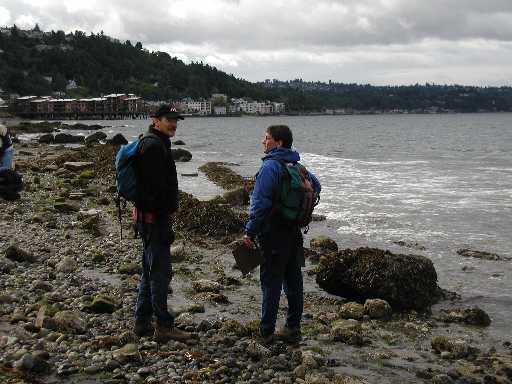
Gaging Station #12145500 (see http://water.usgs.gov/realtime.html)
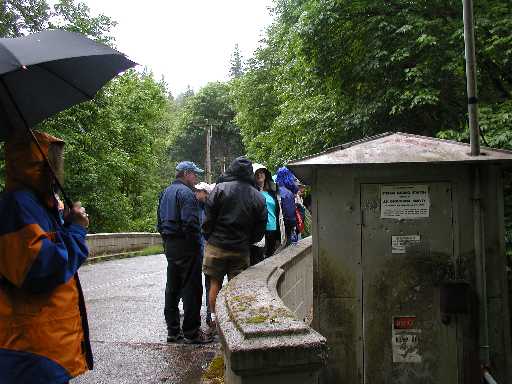
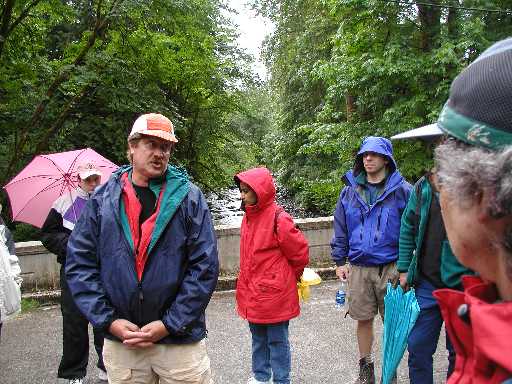
Upper Raging River -- measuring discharge
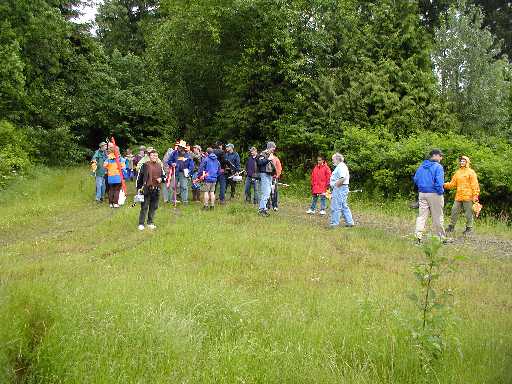
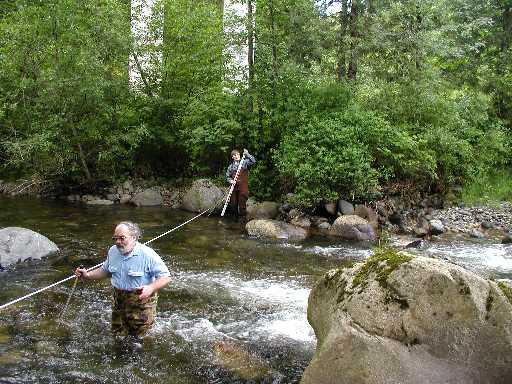
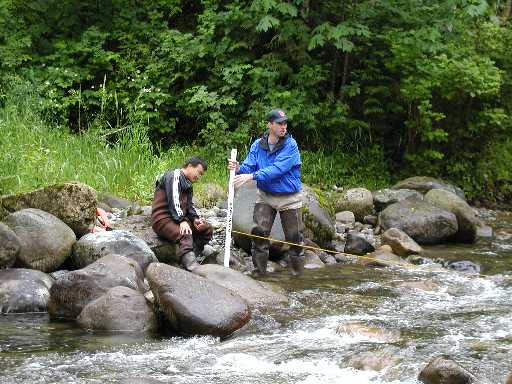
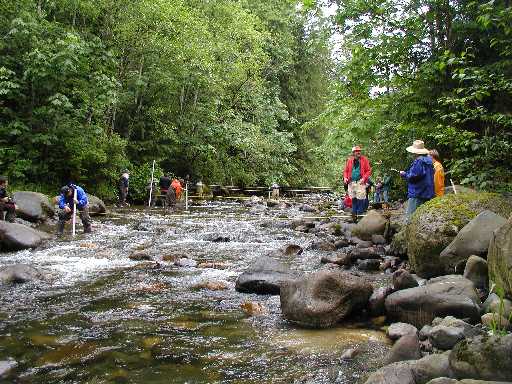
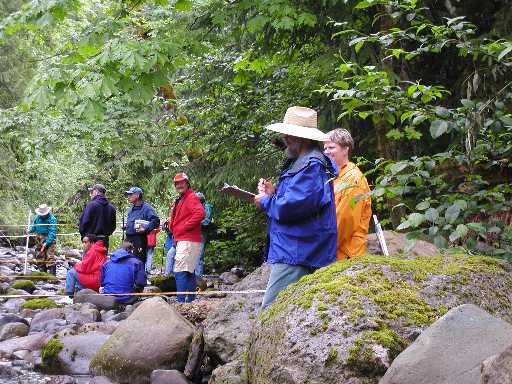
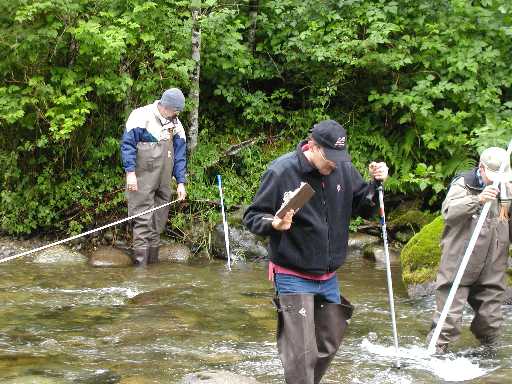
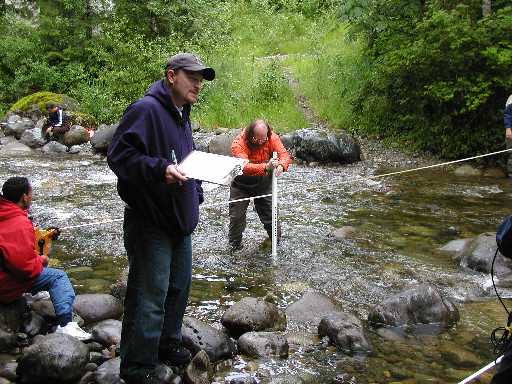
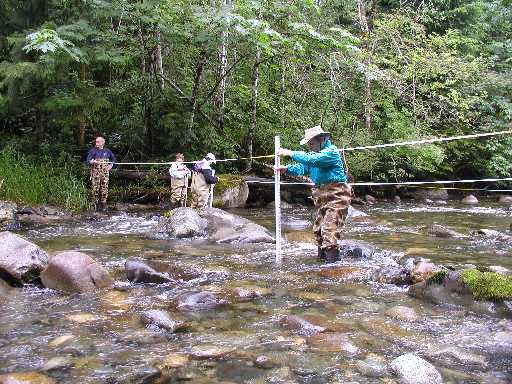
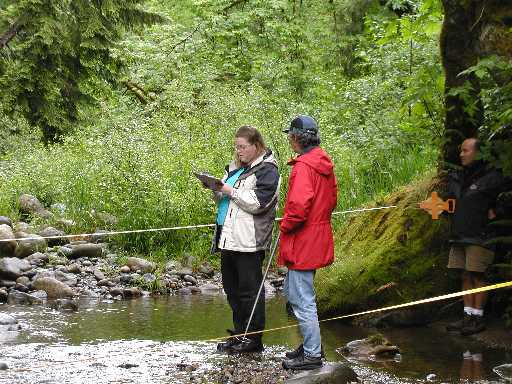
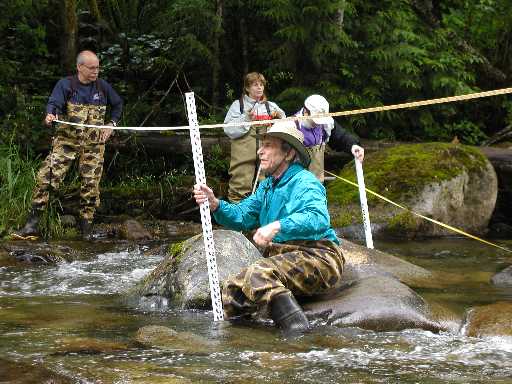
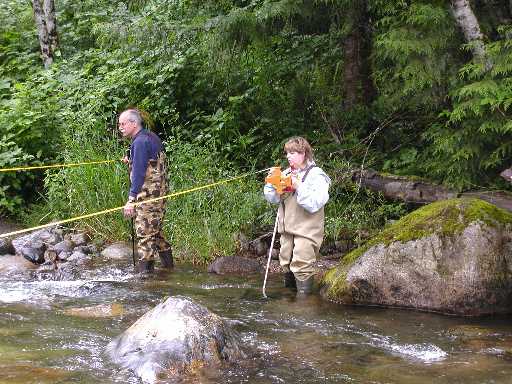
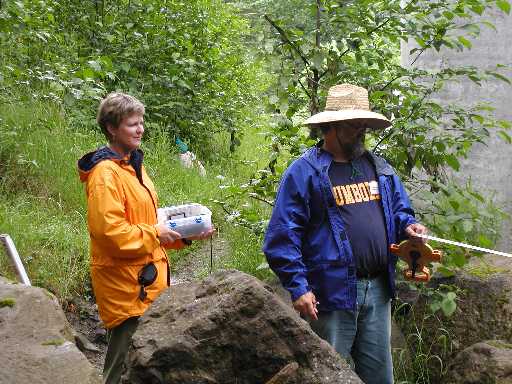
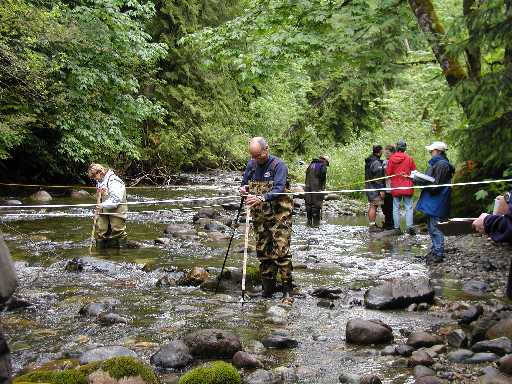
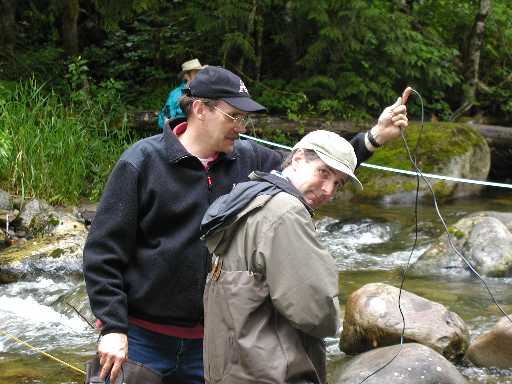
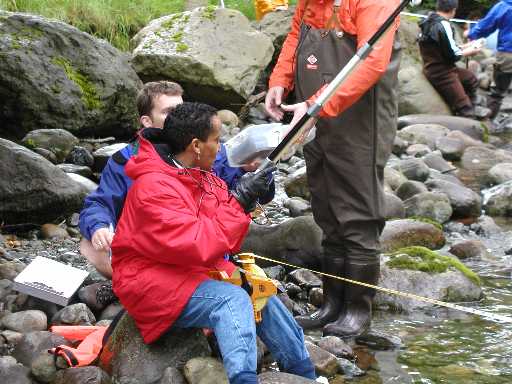
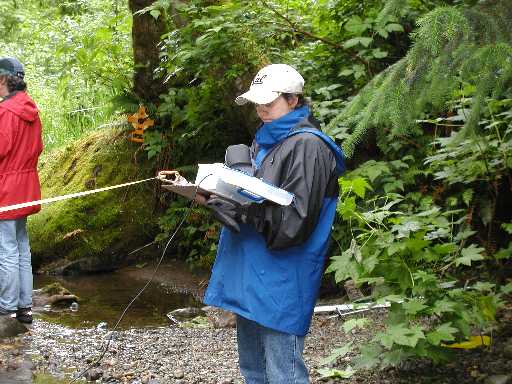
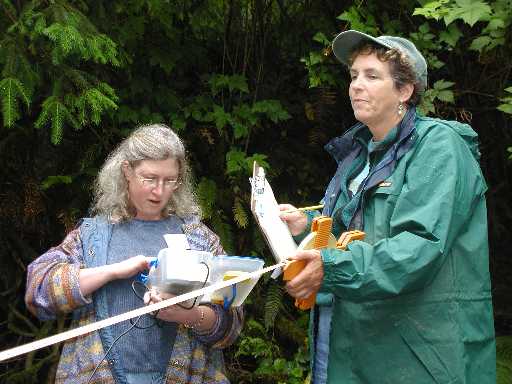
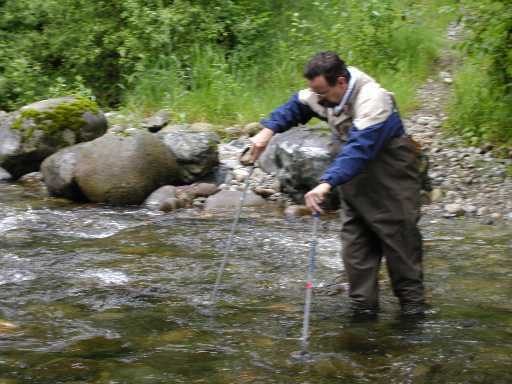
Wednesday
Federation Forest State Park


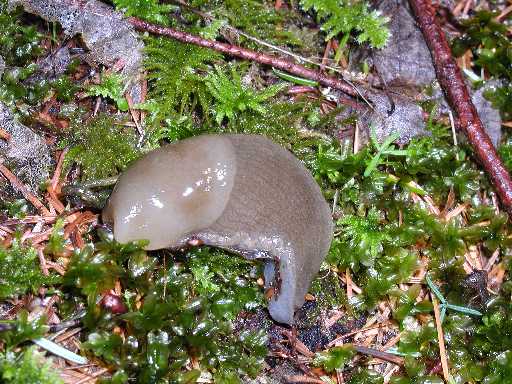
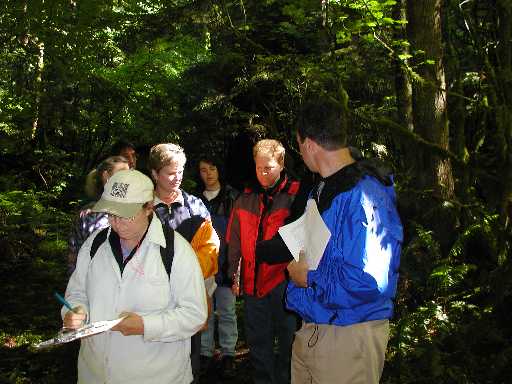
Thursday's Talks
- Dan Robinson
Fitchburg St. College chem/bio website: http://alice-marie.fsc.edu/.
Follow links to Environmental Science and STELLA labs.
High Performance Systems (info on STELLA): http://www.hps-inc.com/
Textbooks: Dynamic Modeling, by Hannon and Ruth.
Springer Verlag. http://www.springer.de/cgi/svcat/search_book.pl?series=3427
Rob Cole has written an interesting paper on modeling using
Stella (word document). Check out Mathematical
Modeling
- Greg Langkamp
texts with difference equation material
Discrete Dynamical Systems: Theory and Applications,
by James T. Sandefur. Clarendon Press, Oxford, 1990.
Functioning in the Real World, a Precalculus Experience.
Gordon, Gordon, Fusaro, Siegel and Tucker. Addison Wesley,
1997.
A Course in Mathematical Modeling, Mooney and Swift,
MAA publishers, 1999. See http://www.maa.org/pubs/books/mml.html
- Kathy-Winnett Murray and Janet Anderson
GEMS courses at Hope College: http://www.hope.edu/academic/gened/gems/
Ecobeaker: http://www.ecobeaker.com/
Akçakaya, H.R., M. A. Burgman, and L. R. Ginzburg.
1999. Applied Population Ecology: Principles and Computer
Exercises. Sinauer Associates, Sunderland, MA.
(Christian's suggestion) Concepts in Biological Oceanography,
P.A. Jumars. 1993. Oxford
- Joe Hull
Bibliography
and Resources
Bak, Per (1996), How Nature Works: The Science of Self-Organized
Criticality; Copernicus (Springer-Verlag), New York, 212
pp.
Barton, C. C. and LaPointe, P. R. (1994), Fractals in the
Earth Sciences; Plenum, New York, 254 pp.
Gaylord, R. J. and Nishidate,
K. (1996), Modelling Nature: Cellular Automata Simulations
with Mathematica; Telos, New York, 260pp. the Mathematica
(.ma) files are at http://www.telospub.com/
Goltz, C. (1997), Fractal and Chaotic Properties of Earthquakes;
Springer-Verlag, Berlin, 178 pp.
Mandelbrot, Benoit (1983), The Fractal Geometry of Nature
(revised edition); W. H. Freeman and Company, New York,
468 pp.
Peak, D. and Frame, M. (1999), Chaos Under Control; W.
H. Freeman, New York, 222 pp. see their related course website
at http://www.math.union.edu/research/chaos/welcome.html
Turcotte, Donald L. (1997), Fractals and Chaos in Geology
and Geophysics (Second Edition); Cambridge Univ. Press,
Cambridge, 398 pp.
University of Washington, Department of Earth and Space
Sciences, Pacific Northwest Earthquake Information website:
http://spike.geophys.washington.edu/SEIS/PNSN
Weatherley, D., Mora, P. and
Xia, M. (2001), Long-range automaton models of earthquakes:
power-law accelerations, correlation evolution, and mode
switching; paper online at http://www.quakes.uq.edu.au/~weatherley/LRA/paper/paper.html
Yeats, R. S., Sieh, K. and Allen, C. R. (1997), The Geology
of Earthquakes; Oxford University Press, New York, 568 pp.
Yeats, R. S. (1998), Living With Earthquakes in the Pacific
Northwest; Oregon State Univ. Press, Corvallis, 309 pp.
- Wrap-up
a special thanks to Mimi Aregaye for providing the
wonderful T-shirts for our visitors from out of town.
Pre-Workshop Information
******** Notice **********
As of March 28, the workshop is full. If you would like to
be put on the "waiting list", please contact us as described
below. Thank you for your interest in the QELP workshop.
The Quantitative Environmental Learning Project will be hosting
a 4 day workshop at Seattle Central Community College in Seattle,
Washington from June 17-20 (Monday through Thursday), 2002. The
workshop will focus on curricula that integrate mathematics and
environmental science at the introductory college level. The workshop
will be composed of two days of in-house sessions and two days
of field trips.
A wide variety of in-house activities are
planned, and plenty of time for free-form discussions and sharing
will be included. We anticipate some formal presentations from
the organizers, participants and guest speakers, focussing on
strategies, materials and outcomes of interdisciplinary math and
science education. We also anticipate a number of hands-on activities
that you can take back to your classes, such as creating artificial
landslides using a cellular automaton that models landslide recurrences,
and quantifying an "urban health index" for a couple
of city blocks adjacent to Seattle Central Community College.
One of the field trips will visit both the
Puget Sound shoreline and a Cascade foothills stream. In the morning,
we will take advantage of a low tide to conduct biological censuses
in the intertidal zone, and collect butter clam shells to take
back to your classroom for biometric analysis. In the afternoon,
we will measure stream transects across the Raging River and determine
stream discharge from velocity and transect measurements, using
state-of-the-art velocity meters and data collection units. We
will also brainstorm about quantification of riparian ecology.
The second field trip will visit Mt. Rainier
and vicinity. In the morning, participants will survey different
aged forests along the White River corridor, from 300 year old
virgin timber to third generation stick forests. Attendees will
study the biometrics of Douglas firs and brainstorm about quantification
of forest ecology. In the afternoon, we'll examine the geology
of Volcano Rainier and learn about hazards, probabilities and
recurrence intervals of both eruptions and debris flows. See schedule
below.
|
MONDAY
17 JUNE
8am - 5pm
|
TUESDAY
18 JUNE
7am - 5pm
|
WEDNESDAY
19 JUNE
7am - 6pm
|
THURSDAY
20 JUNE
9am - 5 pm
|
|
Introduction
overview of workshop,
discussion of QELP and how to pronounce it,
our course at SCCC,
etc.
presentations
Jan Ray & Len
Vacher: on quantitative and scientific literacy national
initiatives
Janet Andersen &
Kathy Winnet-Murray:
Developing interdisciplinary courses at Hope College
|
FIELD
TRIP
# 1
Puget Sound Beaches
transects
sampling
censuses
clam biometrics
|
FIELD
TRIP
# 3
Douglas Fir
biometrics
&
forest ecology
|
Presentations
on Mathematical Modeling in Environemental Science
Dan Robinson:
Student projects using STELLA
Greg Langkamp:
Modeling with difference equations on the TI-83 and Excel.
|
|
LUNCH
|
LUNCH
|
LUNCH
|
LUNCH
|
|
Urban Health
Index
----------------------
neighborhood
measurements
--------------------
results, discussion
|
preparation
--------------------
FIELD
TRIP
# 2
Raging River
discharge, velocity,
transects, etc.
|
FIELD
TRIP
# 4
Mt. Rainier
hazards
lahars, mudflows,
landslides
eruptions
|
Janet Andersen &
Kathy Winnet-Murray:
matrix algebra and
changes in tree species composition in a forest
Joe Hull:
Earthquake modelling and the bingobox exercise
-------------------
wrap-up, conclusion
|
|
Dinner at Baccus
on Capitol Hill
|
|
Dinner at Elysian
Brewpub on Capitol Hill
|
|
Much of the cost of this conference will be
covered by the organizers, including housing at the Virginia Mason
Inn on Capitol Hill near SCCC. A generous stipend will be provided
to each attendee for participation.
We encourage pairs of instructors, as well
as individuals, to apply. Priority will be given to pairs of instructors
in mathematics and environmental/earth science from the same institution.
Funding is available for up to 24 participants total.
If you are interested in attending this workshop,
please download an application form by clicking on one of the
links below (application available in Word or PDF), print the
application form, fill it out and send it in.
Application in Word Format
Application in PDF Format
Snail mail the application form to:
Joe Hull
Division of Science and Mathematics
Seattle Central Community College
1701 Broadway
Seattle WA 98122
Or you can fax the application form to:
Attn.: Joe Hull
206-587-3837
If you want more information, contact Greg or Joe
Greg Langkamp, mathematics (GLangkamp@sccd.ctc.edu;
206-587-3810)
Joe Hull, environmental science (jhull@sccd.ctc.edu;
206-587-4905)
Preliminary deadline for applications:
1 February 2002
|